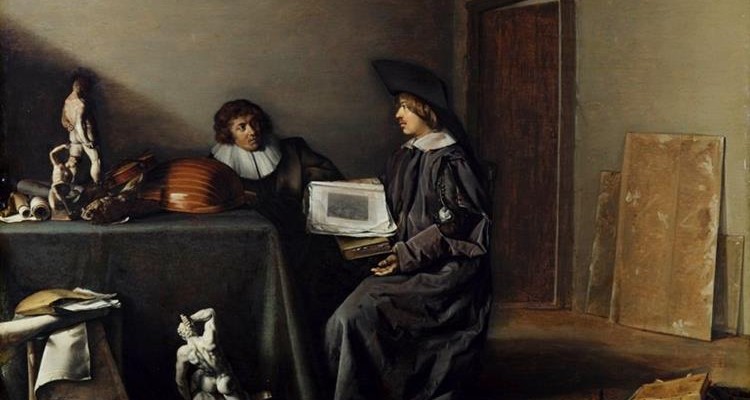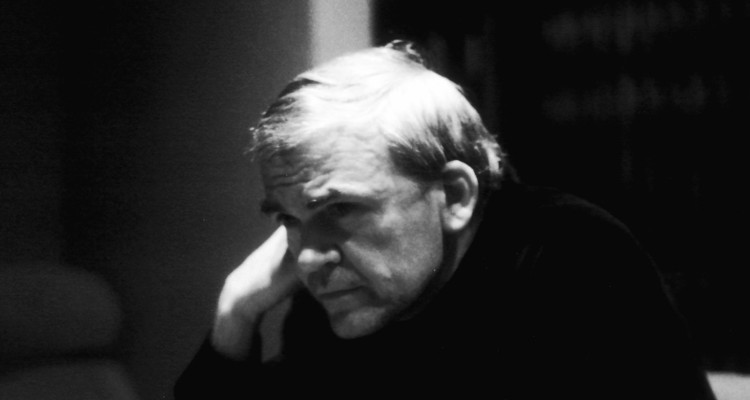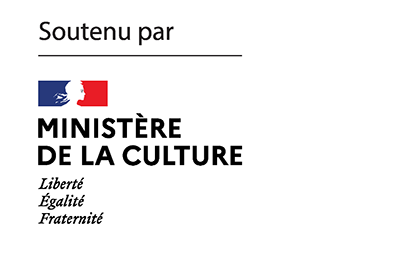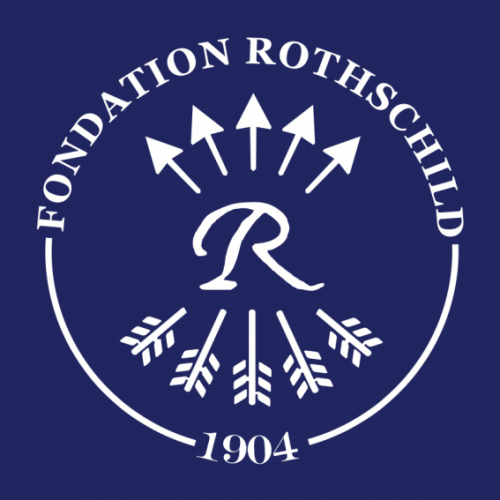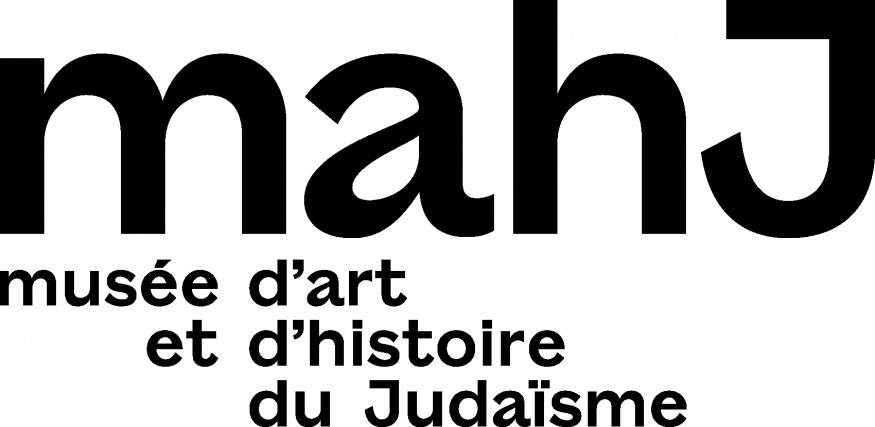We, in Europe, have long been spectators of a debate on the relationship between Islam and politics. The matter has become as problematic as timely as it is elusive. How do we understand this problematic, which though arising in Islam has become a question for us all? Anoush Ganjipour’s latest volume, L’ambivalence politique de l’islam: Pasteur ou Leviathan? (Paris, Seuil, 2021, untranslated), stands out from the normal run of studies in the depth and radicalism of the internal critique it undertakes. K. meets with the author to discuss this landmark book.
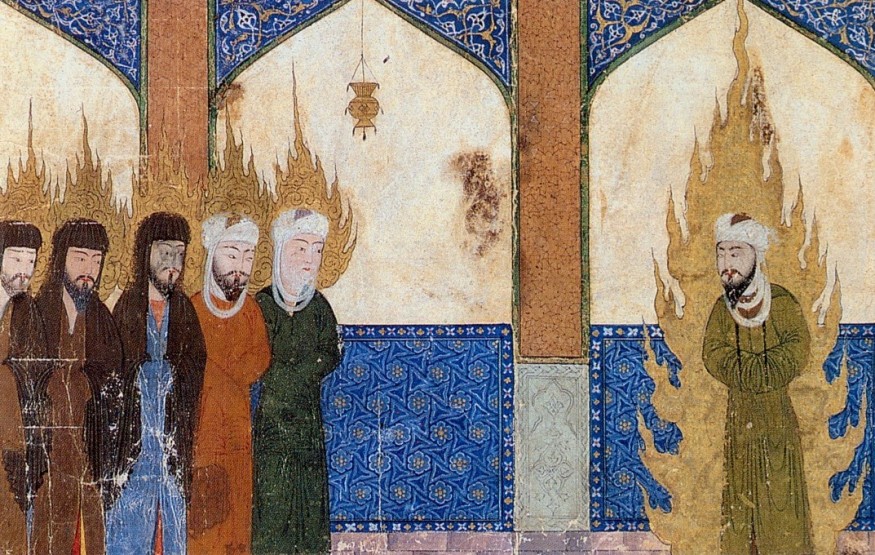
Introduction
In L’Ambivalence politique de l’islam, Anoush Ganjipour follows in the footsteps of Leo Strauss: if one wants to classify monotheistic religions, Judaism and Islam go together, both of them centered on Law, whereas Christianity is organized around faith. More precisely: Islam takes note of Christianity’s universalization of Judaism, endorses this procedure, but then takes a step backward in order to envelop the universal in the Law. Put in simpler terms, Islam does not propose a Law for a people, nor a faith for humanity, but a Law for humanity. But in resituating in the wellsprings of Late Antiquity, Anoush Ganjipour discerns Islam’s nature with rare acuity.
Islam, he explains, must be understood as a persistent theological-political language. This language, which has an immutable structure, is dual. Islam’s language oscillates permanently between two poles: law (legislation) and faith (guidance), the monarchical model (the commander who has authority over a collective) and the pastoral model (the individualizing government of the guide), a state and a universal communion. All historical manifestations of Islam oscillate between these two contradictory possibilities. Between monarchy and pastorate, Islam does not choose, but associates them in their tension, which generates exchanges, communications, interpolations, reciprocal intrusion between the two poles. The coherence of Islam, according to Ganjipour, lies in the fact that it remains itself in a historical dynamics that runs from Late Antiquity to the present day, including in the religion’s most current expressions. Like a pendulum, it swings back and forth, without ever settling. Where then does the politics of Islam lie? Ganjipour answers that it lies in the enduring dualism of the theological-political forces, which can never be resolved. The Law presupposes the State, but the Law subverts the State. The postulate which presents God as powerful (or great) could mean that the Law must be imposed through the mediation of the monarch (of the state), but it could also mean that the Islamic monarchical state must be limited in order to leave space for a community guided by a divine friendship. Both loom as possibilities of one and the same language, emanations of a self-same matrix. More than that – rendering the demonstration ever-more complex – the forces intermingle, both present in each swing of the pendulum. The process is inexorable and iterative. No exit.
One should not conclude on this basis that Islam remains sealed off from the outside world, or that the religion does not adapt to diverse geopolitical contexts. But Islam faces these challenges by reformulating them and rephrasing them to its own language. At this point, Ganjipour asks himself, and us along with him: what does this historical dynamics entail, and how might they prove relevant to today’s Europe? “Why does the Islamic notion of community hinder the community of autonomous individuals that is at the foundation of modernity,” he writes. We must return to the theological-political circularity of Islam’s language in order to formulate problem with sincerity and realism.
In K.’s interview with the author, the crucial question becomes this: Does a modern way out of this theological-political device exist? What is it? The ‘grammarian’ of the Islamic language addresses himself to two audiences: both the political community that Europe is now attempting to constitute, which includes many ‘speakers’ of Islam; and the whole subcommunity formed by speakers of the Islamic language.’ One hopes the latter group might find a reflexive lever in such work, and thus, a means to modernize the language, drawing on its own resources. – Danny Trom
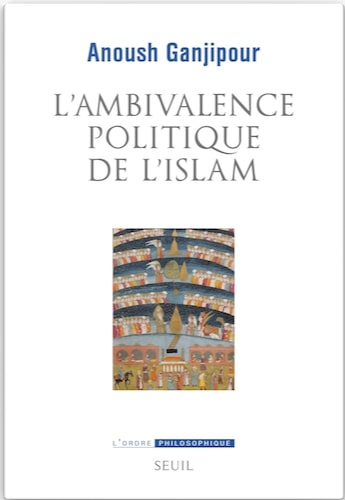
Danny Trom: In your book, you seem to make ambivalence a key notion for understanding the relationship of Islam to politics. In what sense is this relationship ambivalent?
Anoush Ganjipour: We have to start from what was the initial problematic of this work. What concerned me was the major difficulty one encounters when trying to understand the relationship of the religious, theological, and even metaphysical tradition of Islam with politics. This difficulty stems from the fact that one can have two completely coherent and well-founded, but nonetheless contradictory readings of the whole of this tradition. Islam can be read, in its own historical development, as a gradual retreat from the political vision of the world, which coincides with the rapid transformation of the primitive Islamic government into a succession of imperial reigns, up to a certain point, with a parallel series of local governments in the land of Islam. But one can also read the same tradition by adopting another framing: considering that the whole of the Islamic tradition involves, in almost all its corners, questions related to politics in the earthly sense of the term. We are thus faced with a rather peculiar phenomenon, since the same sources, the same thinkers, the same corpus lend themselves to two readings: one political, and the other anti-political, or even apolitical.
But this problem is even more complicated: we can see that within the political reading of Islam, this same interpretative dichotomy is reproduced. Here too one can read the Islamic tradition as fundamentally centered on the idea of a hegemonic, hierarchical and centralized theological-political power, what is today loosely called the caliphate. But one can also read this tradition as a kind of liberation theology in which the religious element provides a particularly effective lever to destabilize any form of submission or hegemonic exercise of power, including power exercised in the name of Islam.
The ambivalence lies precisely here. For in reality, these optical illusions are inherent to the relationship between the theological and the political in Islam. This makes the relationship of Islam to earthly politics constantly appear as a Kippbild, to use a German word that is difficult to translate, that is, an “ambiguous image” or a “reversible figure”.
D.T.: And it is in this ambivalence that you see the political problem of Islam?
A.G.: Yes, I see the problem in the sense that this ambiguity prevents the application of modern solutions to disentangle the political from the religious within the Islamic tradition. You cannot just copy the idea of secularization onto it. The result of this situation is a series of paradoxical attempts: some think that the problem of Islam is the Sharia and that this normative aspect should be repressed to make Islam compatible with a secular politics. Some Islamologists go so far in this direction that they want to invent, in the name of Shi’ism, a spiritual Islam without Law, which looks rather like a kind of alternative Christianity without a Church and which could never really exist as such in history. Another group among scholars of Islamic Studies or Arab thinkers thinks exactly the opposite. They refer to the Iranian Shiite state, explaining that such a state in the name of Islam was only possible because of the specific relationship that Shiism has with Sharia and divine law. In other words, they consider that the problem is not with Sharia but rather that Shiism has compromised the centrality of Sharia in Islam with an esoteric and spiritual faith. This interpretive gap becomes ironic but also highly interesting when some of the latter group, such as Wael B. Hallaq, go so far as to theorize in American universities about a Sharia-centrist conception of Islam that they believe would be an antidote to the idea of the religious state, and they even propose such a legalistic Islam as a civil anti-state religion that could realize, in the West itself, the postmodern promise of a self-governed, post-state society.
I do not believe at all in a particular essence that would distinguish Islam from other monotheistic religions. On the other hand, I do believe that Islam has arranged the religious elements it had at hand in a specific way to arrive at a theological-political structuring of its own.
Within the Muslim world, among the proponents of political Islam and those who oppose it, we encounter the same paradox. It seems as if they are all trying to discard the elements that bother them or that they consider as non-authentic in order to give a univocal meaning to the relationship between Islam and politics. But in vain, because, as I have just said, this relationship remains ambiguous and makes the whole thing ambivalent, whether in the theological, legal, metaphysical, or even mystical discourses of Islam.
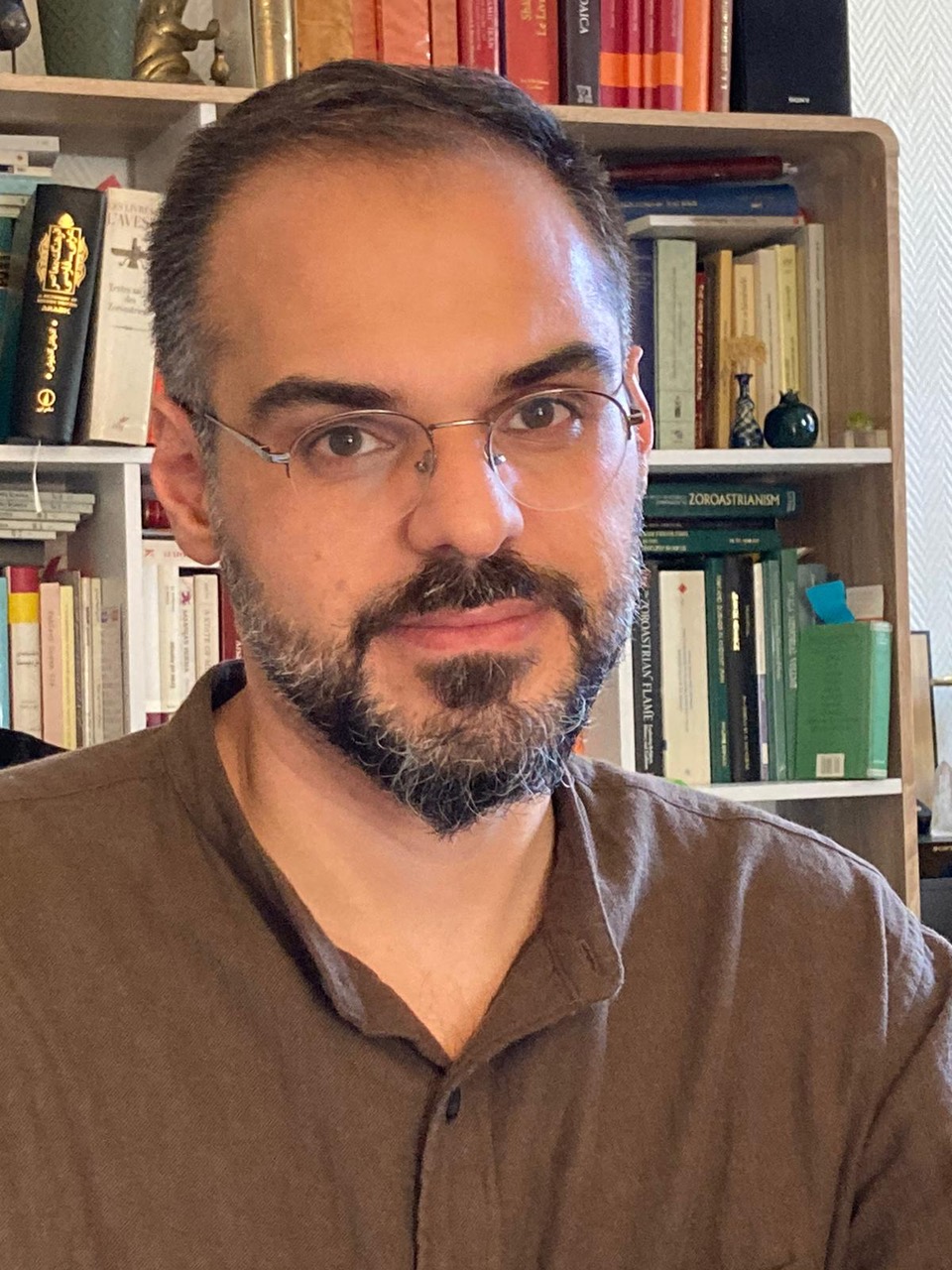
D.T.: If we accept your schematization, we must believe that this ambivalence is inherent to Islam and widespread throughout its tradition. How do you explain this omnipresence that does not fade away? Does not this lead to a kind of essentialism?
A.G.: In my book, I explain at length why I do not believe at all in a particular essence that would distinguish Islam and the Islamic tradition from other monotheistic religions or religious traditions of Late Antiquity. However, I believe that Islam, like any religion, has arranged the religious elements it had at hand in a specific way to arrive at a theological-political structuring of its own. I have tried to undertake a kind of archaeology of this structuring to understand why it generates ambivalence. And the answer I came up with is that Islam has internalized two heterogeneous paradigms of authority: on the one hand, the monarchical paradigm and, on the other hand, the pastoral paradigm which is based on the idea of guidance. Monotheism, the divine government of the world, the relationship of God to men, prophecy: the Islamic tradition, from its genesis, has wanted to think and systematize all this from both the monarchical and the pastoral paradigms. It is thus the telescoping of the two paradigms that has structured the theological-political relationship of Islam as an ambiguous image.
As for the relationship of kingship to prophecy, the figure of David plays a key role throughout the Islamic tradition, including for modern theorists of the Islamic state. But the David described in the Qur’an undergoes some interesting modifications in relation to the biblical figure.
D.T.: In Jewish sources, there is also a certain tension between monarchy and prophecy. The king has no power over the revealed Law, and when he steps out of the right path, it is the prophet, from his own position, who intervenes to play the role of counter-power. Does Islam take up something of this biblical pattern?
A.G.: Precisely, it seems to me that in order to understand this particular structuring of Islam, we should start from the traditions that were its main sources, that is to say Judaism, Christianity, but also Neoplatonism and late Greek theological-political thought or Iranian religions. For this tension is already found to different degrees in most of these religious traditions which are in the process of formation or transformation during the long period of Late Antiquity. I would say that what characterizes Islam is that the tension there reaches a critical level. Critical in two senses, since on the one hand this tension makes the relationship of this religion to politics problematic. But, on the other hand, it is at the origin of the internal dynamics of Islamic political thought in its historical development up to the present day.
To return to the case of Judaism, the record of Islamic borrowings, especially in the relationship of the religious to the political, is very extensive. The present insistence on the kinship of Judaism and Christianity, often with the aim of further isolating Islam and Muslims, overlooks a well-known fact that Leo Strauss reminded Westerners of: if a dividing line were to be drawn between the three great monotheisms, it would put Judaism and Islam, which are legal religions, on one side, and Christianity, alone, on the other. Having said that, what was important to me in this work was rather to see according to what internal logic the Islamic tradition chooses these elements borrowed from Judaism and how it redefines them in order to rearrange them in a new structure.
As for the relationship of kingship to prophecy, the figure of David plays a key role throughout the Islamic tradition, including for modern theorists of the Islamic state. But the David described in the Qur’an undergoes some very interesting modifications compared to his biblical figure. The David of Islam is both king and prophet, he even has his own holy book, and God grants him divine and esoteric wisdom. The Qur’anic discourse goes even further by literally giving him the title of God’s appointed Caliph on earth. David’s singular importance comes from this status which unites several qualities or functions that are a priori separate. In fact, David becomes the archetypal model for the figure of Muhammad who gather all these qualities and, subsequently, for the idea of the Islamic caliphate on earth.
D.T.: On the subject of the genealogical relationship of Islam with Judaism, let us return to the passage in your book where you describe the first face-to-face encounter between Jews and Muslims in Medina. This seems to be a formative moment for the Islamic political matrix, because the Jews were not individuals but already formed a distinct community in the tribal society of Arabia; they formed a religious community but on the earth and not projected simply into the kingdom of heaven. Obviously the idea of a divine Law that applies in life here below and that serves such a community organization is crucial. How is Islam inspired by and distinguished from this form of religious community and community bonding?
A.G.: The text that the Islamic tradition considers to be its first political document sheds light on this relationship. It is a kind of charter that Muhammad established to found his government in Medina when he settled there with the first group of his followers. In this charter, two communities are recognized as such and by the same designation of umma. This means that the new Muslim converts are now a community in both the religious and political sense, like the one already formed by the Jewish tribes rooted in the region. But we must know what the word umma meant in Arabic at the time. It refers to a group of individuals who are led by a guide towards an eschatological goal which is salvation. And the Law is the instrument of this guidance.
D.T.: So it is a relationship that is not simply defined in the ideological context of Late Antiquity, but is first and foremost part of the tribal organization of the society of Arabia at the time.
A.G.: Definitely. This mimetic and at the same time differential relationship with the theological-political constitution of the Jewish community is the first decisive step that will then allow Islam to move from the tribal socio-political context of Arabia to the ideological and doctrinal map of Late Antiquity in order to shape its religious identity as a new monotheism. And this identity is constructed from the superposition of two layers. A first anthropological layer which is indeed specific to Arabia as the birthplace of Islam. And a second layer which is that of the religious and political systems of Late Antiquity.
Islam strives to position itself in the space between Judaism and Christianity by marking its boundaries with them.
D.T.: Indeed, the same word umma also exists in rabbinic literature to designate constituted groups, with their own law or government. Simply, the umma by which the Jews designate themselves is clearly different from the umma that Muslims aspire to form.
A.G.: In order to understand the logic of the divergence, one must situate oneself on the doctrinal map of Late Antiquity. And there, the general orientation of Islam becomes quite clear. In order to set itself up as the most complete and effective religious system in relation to its rivals, Islam endeavors to position itself in the space between Judaism and Christianity by clearly marking its borders with them. In this case, the example of the umma is very instructive. For in order to determine the meaning that the Islamic tradition wants to give it, it should be compared with both the Jewish and Christian communities. That is to say, on the one hand, with a community united by divine election and covenant but concrete, and on the other hand, with a community whose mode of unity Paul defines when he announces that “we Christians are members of the body of Christ.” In relation to these two communities, the Qur’an describes the umma of Abraham, which represents the archetypal model of the Islamic umma, in a pithy and initially indecipherable statement that “Abraham was indeed an umma” (16:120). Muslim thinkers, according to different periods or trends, have tried to solve the problem by relying on the polysemy of the word umma or by interpreting it in a metaphorical or metonymic sense. Thus, some argue that the statement means that Abraham was the father or guide of his umma, or that he encapsulated in his person the virtues of his well-guided community. But some others, often Shi’ah, insist on the literal meaning of the statement by saying that Abraham and his umma are one, as the union of the guide and the guided in the ideal guidance. The ambivalence of this definition of the Islamic umma is a perfect illustration of what I call the political ambivalence of Islam.
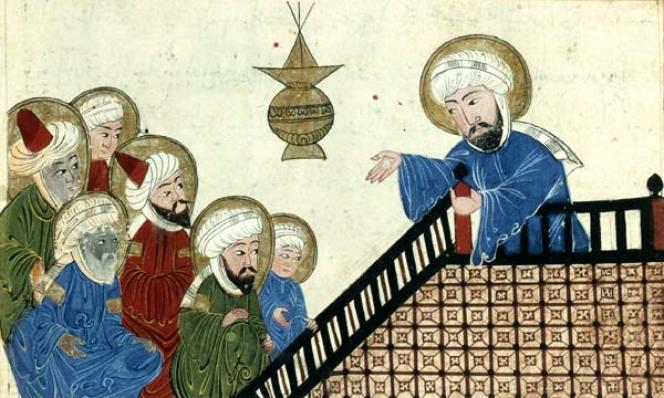
D.T.: What exactly does this guidance consist of that constitutes a distinct theological-political function in relation to the status of the prophet or in relation to the Law? Especially when one thinks of the Jewish community which, since the end of the time of the prophets, has been guided by the Law and its interpretation.
A.G.: In the context of Late Antiquity, and then in Islam, guidance is defined by a personal and unmediated relationship with the guide that one must follow in order to be saved. In this sense, it is a personal government according to the pastoral model. The guide is not a king, but a shepherd who governs each member of his community individually and takes care of him as if he were his own sheep. Among Jews, as later among legalistic Muslims, the hegemonic idea is that after the end of prophecy, the revealed Law alone is the guidance for each individual and ultimately for the community. At the same time, in the Qur’an, what is reproached to the Jews is precisely that they are content with their Law instead of accepting that the guidance of Muhammad takes over from the prophets of Israel.
So, once again, it is a question of differentiating from the model adopted by the Jews. But this relationship between the Law and guidance itself becomes a source of tension within Islam and will contribute to ambivalence. Hence the complicated relationship between Islam and messianism, since the guidance of the Messiah is supposed to allow for the suspension or even the cancellation of the Law. However, historically, it can be seen that, on the one hand, messianism has imposed itself from the beginning as an indispensable component in the theological-political structure of Islam. On the other hand, it is a component that never ceases to be problematic, including for Shiism, which wants to make Islam a basically messianic religion.
There is an attitude that consists in first separating Sunnism and Shiism and treating them as if they were two completely different religions, and not as two currents within the same religion.
D.T.: A question inevitably comes to mind. One wonders whether the way you describe the political question of Islam is not predetermined by the Shiite vision.
A.G.: Naturally, I would not be able to detach myself completely from my cultural background, which is actually marked by Shi’ism and more generally by Iranian Islam, which also includes several intellectual trends or mystical currents of Sunnism. Having said that, I have tried to do the process in reverse. On the political question of Islam, there is an attitude, indeed much more widespread in the West than in the Muslim world itself, which consists in first separating Sunnism and Shi’ism and treating them as if they were two completely different religions in two worlds isolated from each other, and not as two currents within the same religion. This view is anything but historical. It must be realized that the Shiite schism is not an alternative solution that, at a rather late stage in the history of Islam, would be formulated to settle once and for all a theological-political crisis, as was the claim of the Protestant Reformation for Christianity. On the contrary, the cleavage between the two currents, Sunni and Shiite, occurred at the beginning of the history of Islam, and is coextensive with that history. This means that this split should be seen both as a historical phenomenon that expresses the formative crisis of Islam and as an ongoing attempt to resolve it. For example, the question of the Law is constantly raised in the history of the different Shi’i branches and keeps a crisis within Shi’ism alive. And on the other hand, Sunni Islam has never managed in its history to totally exclude the messianic question despite its incompatibility with the strong legalistic emphasis of Sunnism, which wants to reject any religious guidance outside the Sharia. Every time Sunni Islam wants to formulate a theory of political power, the messianic or millenarian question reappears in some way, and this from the first caliphal dynasty to the Ottoman ideology and then to modern Muslims’ reflections on the possibility of Islamic government.
And when we look at the intellectual history of Islam, we see theological-political thought developing and evolving on both sides through a network of mutual influences, relays and replicas around questions and answers that are formulated symmetrically. No Muslim thinker thinks outside this network, whether he or she likes it or not. It is precisely by following this network that I have tried to account for the historical development of Islamic political thought in a continuity that reaches the modern era. Otherwise, by separating Muslim thinkers or their theses in the name of their belonging to Sunnism or Shiism, we lose sight of this circular continuity. One would even lose sight of the logic behind their divergence.
Taking the text of the Quran and being indignant about its violence, which reminds us of the acts of Daesh, is an absurdity that does not help us understand the problem.
D.T.: One wonders in what way this genealogical path that your book proposes for Islamic political thought could help to think about the current situation of Muslims confronted with modern politics that is based on the form of the secularized nation-state.
A.G.: My project in this book was not to propose a solution to this problem. I wanted to first take a step backward to introduce the historical dimension of Islamic political thought into the debate. I had to understand first how this political thought, starting from an internal dynamic, has undergone a series of historical transformations to reach us. Taking the text of the Qur’an and being indignant about its violence, which reminds us of the acts of Daesh, is an absurdity that does not help us at all to understand the problem. Nor does the French Islamologist who comments in an abstract way on a 17th century Shiite philosopher to explain that if this philosopher was able to inspire the contemporary theory of the Shiite state, it is because he was misread by Khomeini. To reason in this way is to deny the historicity of the reading of Khomeini or his contemporaries. In order to deconstruct the Iranian Islamic State theoretically, what seemed to me to be much more important was to understand first of all how and according to what historical logic within the Islamic tradition such a reading of Shiite philosophy by Khomeini became possible.
This approach leads us to consider contemporary phenomena such as the Shiite state, the Muslim Brotherhood or other forms of political Islam not in a unilateral way but according to their double facet: on the one hand as symptoms of an internal crisis of the Islamic tradition and, on the other hand, as products of an internal dynamic from which this tradition has constantly reshaped itself in order to respond to new historical circumstances according to the specificities or possibilities of its own structure. The fact that the Islamic tradition does not evolve in the direction we wish does not mean that it does not transform itself historically.
D.T.: Why have the historical transformations of Islamic political thought not led to its self-adaptation to modern conditions of life, but rather pushed this tradition in the opposite direction and toward a confrontation?
A.G.: This was exactly my guiding question. One wonders why the Islamic tradition reacted in this critical way. Two obvious things are often forgotten in hasty analyses. That both political discourses, modern and Islamic, have their history. And that at the same time, they have intersecting origins. If there were nothing common or analogous between the two discourses, their meeting could not take the form of a confrontation so critical for both. Above all, if one remembers that this encounter first took place under the hegemonic weight of modern discourse and the ideology of progress in a defeated East, one must ask why the result was not the liquidation of Islamic political thought in a process of secularization. My historical archaeology of the Islamic tradition is put at the service of a goal: to create a comparative space that allows us to understand by what means or mechanisms the two modern and Islamic political discourses problematize each other.
It is from the modern historical dynamics and in dialogue with the European political discourse that the conception of the umma and the whole of Islamic political thought are transformed.
D.T.: One sometimes has the impression that certain incompatibilities are structural. The new condition of life of Muslims in the European or more generally Western space requires a community life which is that of a minority. That is to say, a community which, regardless of its numbers, is on the same level as other religious communities and under a secular state. However, the Islamic umma is part of a universalist scheme, and has the vocation of imposing itself as a majority in the long run. How could Muslims in the West resolve this contradiction in their double collective belonging?
A.G.: I would answer first of all that historically the Islamic tradition is not alien to the minority condition. Because of the schism that occurred very early on, the Sunni minority under the Shiite powers and, in a much more lasting and massive way, the Shiite minorities under the Sunni powers had an experience of being a minority community and were severely persecuted. This has had an impact on theological and legal discourse. The notion of taqiya or confessional concealment in the public space, of which today French Muslims are sometimes accused, was originally a theological adjustment that the Islamic tradition, especially in its Shiite side, had developed to organize a minority life. Then, in the premodern era, when border changes or invasions put Muslim populations in a minority situation under Christian rule, Sunni legal schools had no trouble finding solutions that allowed the Muslim community to move into minority mode. This is what happened, for example, after the Crusades or during the Russian invasion of the Caucasus or Central Asia.
D.T.: Except that this minority still defines itself in terms of a majority community that exists elsewhere on earth, i.e. the umma of all Muslims. They do not see themselves as a minority community, but as a temporarily separated fragment of a majority community.
A.G.: Here again we come back to the historical transformations of Islamic political thought. For this current notion of the umma is itself largely a reconstruction that takes us back to the 19th and early 20th centuries when Muslim thinkers encountered modern social and political sciences and actively entered into dialogue with the discourse of modernity. This is a very decisive moment whose intensity and intellectual richness are still not measured. I am hardly exaggerating when I say that Islam reinvents itself through this moment which goes roughly from the second half of the 19th century to the Second World War. And that is when the umma is transformed among Muslim thinkers into a kind of meta-nation in the modern sense of the term. Before, the umma was a community in a rather existential sense. In the imagination of a Muslim, it never covers all the so-called Muslim populations which are de facto scattered over the globe. The umma as a land and territorial political entity that unifies Muslim India, Iran, the Arab populations around the Persian Gulf, the Maghreb and also the Turkish parts of the Ottoman Empire, is a reconstructed concept that fits into the discourse of modern nationalism and wants to be an Islamic reaction or answer to this discourse. The fact that this conceptual reconstruction coincides with the development of Zionism during the same period is no accident. It is from the same modern historical dynamics and in dialogue with the same European political discourse that the conception of umma and the whole of Islamic political thought is transformed.
Where the matter becomes more complicated on the Muslim side is that through the same dynamics, we witness the birth of modern Arab, Turkish, Iranian, Pakistani nationalisms. While the first modern thinkers of Islam wanted precisely to repress this fragmentation by their concept of umma. Today, the question of the Muslim community as a minority in the West is in my opinion secondary to the question of the binationalism of its members.
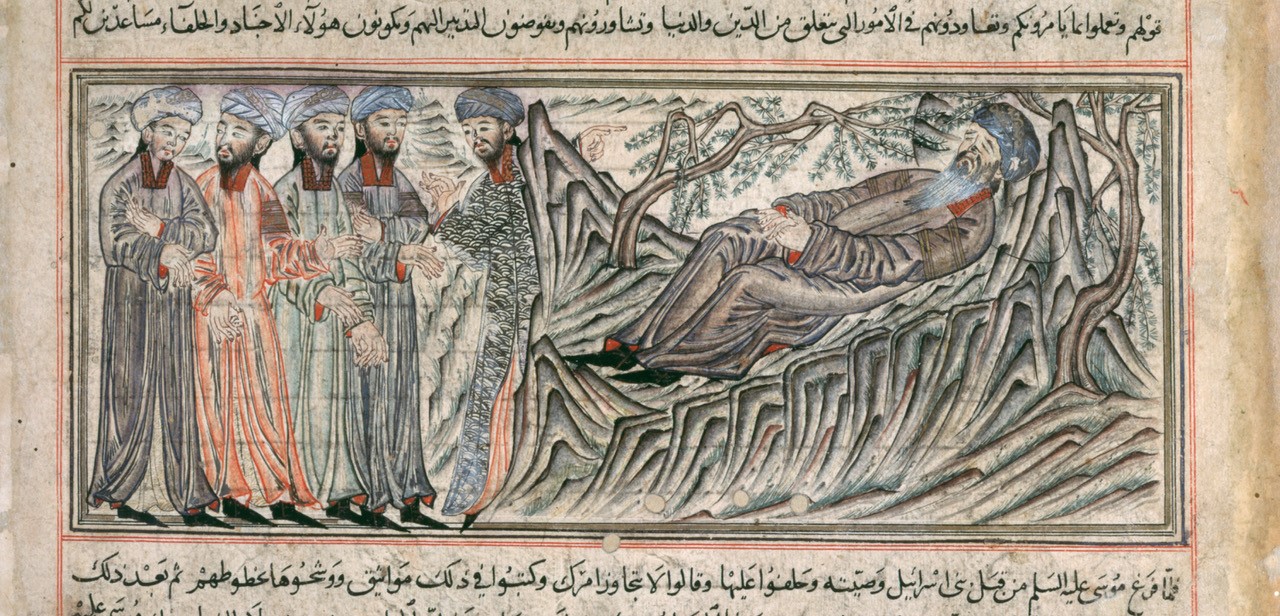
D.T.: Do you mean that Muslims are not only Muslims, but they are first of all members of modern nation-states which are themselves Muslims?
A.G.: I mean that Islam, with its political potential, intervenes as a mediator to determine the binational identity of those who are Europeans, but identify themselves as belonging at the same time to another nation-state which has its own culture, its own political or economic antagonisms, its history which may or may not be marked by colonialism, etc. This is why, as far as I am concerned, I prefer to look for new possible forms of diasporic subjectivity. For it is these new forms that would reform the community of Muslims in France or elsewhere in the West from within.
There is no doubt that Muslims and Jews are the two closest minorities in the West from a cultural point of view.
D.T.: This brings us to the last point we wanted to address with you. In a recent article in the AOC online French review, you argued for the active participation of European Muslims in modern thought with reference to the case of European Jews. How do you see the two cases as comparable?
A.G.: For me, there is no doubt that Muslims and Jews are the two closest minorities in the West from a cultural point of view. This proximity refers to a series of structural affinities between the two religions, but also to a common cultural history in the East. With these affinities and this history, there would be an analogical symmetry between the places that Jews and Muslims occupy in the Western space and here in France. On the other hand, an important difference separates them within this space: it is the much older inscription of the Jews in the history of the modern West and the role they have played in the development of modern discourse, including the development of its self-critical consciousness. This contribution has been possible from the construction of a hybrid figure among Jews, from Mendelssohn, Marx or Durkheim to Levinas, Derrida and even someone radically critical of modern Europe like Scholem. Hybrid figures, because they all had one foot inside Europe and one foot more or less in Judaism. And it is indeed this hybrid situation that gave them a singular position to contribute to the critical development of modernity. I see in the invention of this hybrid figure a gesture to be imitated on the Muslim side. Of course, the result will not be the same, but it is this singular quality of the contribution, this time from the Islamic side, that seems to me so important to reproduce.
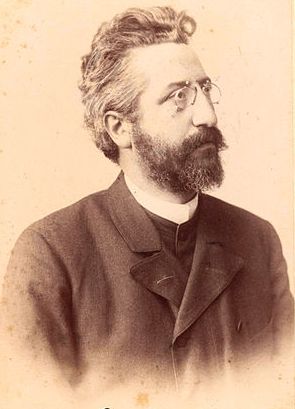
This mimetic exchange I speak of was once done in the opposite direction in the 19th century and by the first European Jewish scholars specializing in Islamic Studies, people like Abraham Geiger, Gustav Weil and most exemplarily Ignatius Goldziher. Muslim culture was not for them simply a subject of Orientalism. The different situation of this culture, the fact that it had developed without persecution and then without being crushed by the Enlightenment, made it a model for these Jews to imitate. But an imitation within European modernity and in order to build an identity that is both Jewish and modern. It is exactly this gesture that seems to me imitable in the other direction.
D.T.: But historical conditions have changed; this Jewish hybrid figure has tended to disappear in Europe.
A.G.: Of course, the historical situation is quite different. The first thing that has changed radically is that the binationalism I was talking about is the new condition that now affects both Muslims and Jews in the West. I am not overlooking the necessarily different modalities of this binationalism on both sides. However, what seems to me more important to emphasize is that this unprecedented situation is at the same time pushing both the Jewish and Muslim sides to the elaboration of new forms of diasporic subjectivity.
D.T.: The Jewish situation is not characterized by binationalism! The Jewish diaspora is part of a device called Galut which has allowed Jews to belong fully to modern nations while remaining a specific collective, without contradiction.
A.G.: I hear you. Obviously, on the Muslim side, the diaspora is not defined by exilic reference to a holy land. But there is also a new fact on the Jewish side which seems to me to affect profoundly the exilic condition. From the moment when, with the creation of Israel, a nation-state in the modern sense of the term is superimposed on the idea of a holy land, I believe that something changes at the very level of the meaning of the Galut for the Jews. On the one hand, a state that calls itself first the state of the Jews and then the “Jewish state” has a de facto tendency to consider every Jewish individual as its virtual citizen. And on the other hand, the anti-Semitic invective that comes to question the diasporic existence of the French or German Jew etc. is formulated following this change as: “you are a Jew, so go home”. I have the impression that these two aspects of the new exilic condition no longer leave any Jew indifferent. Although in this singular form, binationalism becomes a challenge to his diasporic subjectivity, even in spite of himself. This can be the case of a convinced assimilationist French Jew like Raymond Aron, who was one of the first to sense this subjective change as early as the Six-Day War, up to the contradictory situation, a tragic and at the same time somewhat comical situation, in which Eric Zemmour finds himself today when anti-Semites ask him to “go home!”
The fact that this anti-Semitic slur comes out of the mouth of another Frenchman who is like Zemmour but of Arab-Muslim origin sums up in my opinion the complexity of the relationship between the diasporic existence of Jews and Muslims here in Europe. Even if in different forms, their binational marking puts them in similar positions and at the same time makes their relationship problematic. In this new situation, I see a shared challenge on both sides, but also an opportunity to communicate around this common effort. Obviously, we cannot hide the fact that the great obstacle to this communication of diasporic experience or this common effort is the Israeli-Palestinian conflict and the feeling of injustice that it generates.
But the fact that today in 2021 the old anti-Semitic discourse of the 19th century is being taken up literally by publicists or even politicians to be applied this time to Muslims has an objective and clear meaning. When we see Muslims suspected of concealing their “true” beliefs under the guise of normal citizens, how can we not think of the same charges leveled against the Marranos in times thought to be over? This should remind Muslims and Jews that their fates are inseparable here in Europe and I would even say that it should remind them of their cultural brotherhood that they tend to forget. Optimism is not my strong suit, but the more I think about it, the more I am convinced that this new Jewish and Muslim diasporic subjectivity would even have a role to play in achieving a new understanding and true peace between Jews and Muslims in the East.
